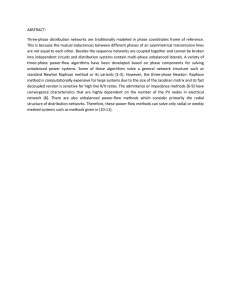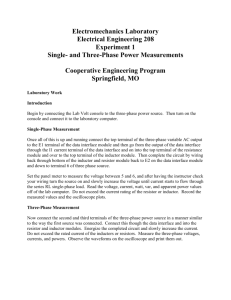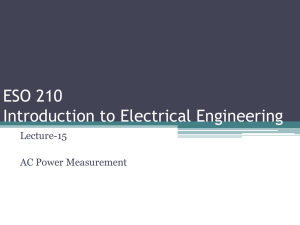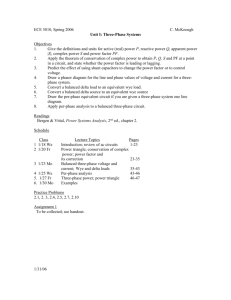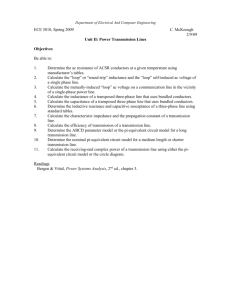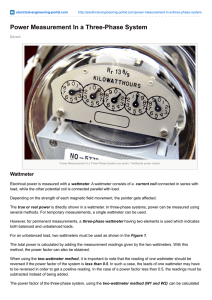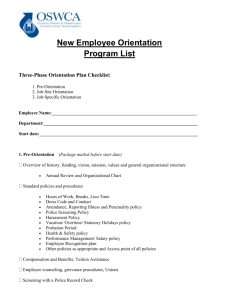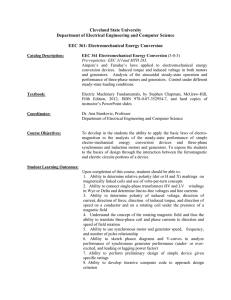MS Word - M
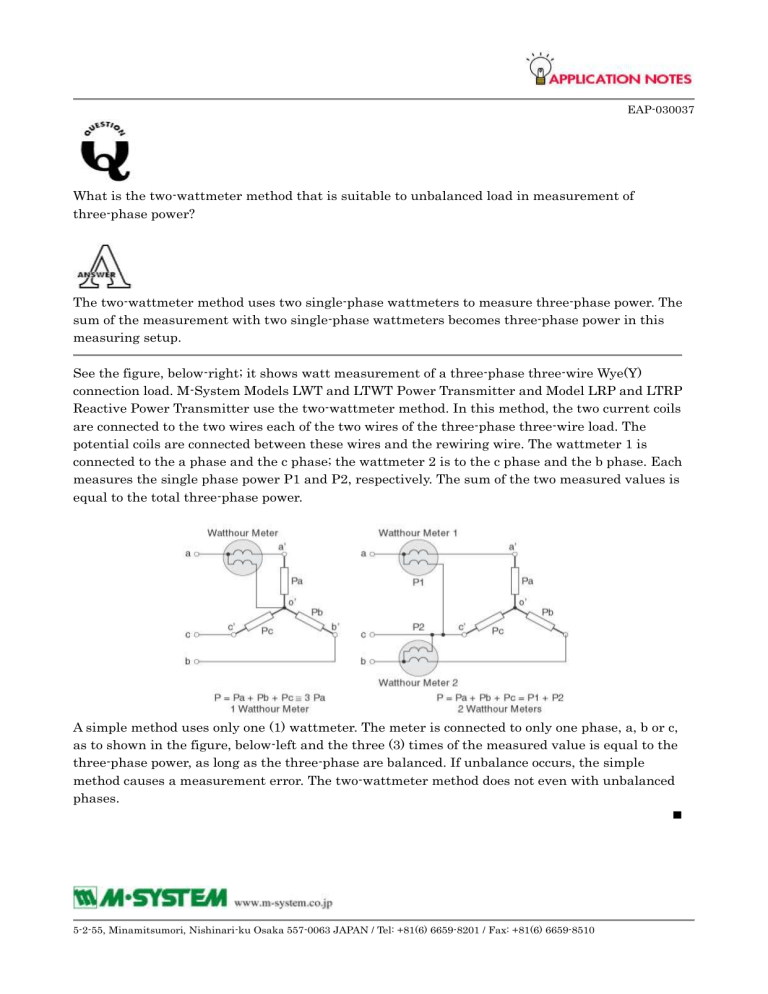
EAP-030037
What is the two-wattmeter method that is suitable to unbalanced load in measurement of three-phase power?
The two-wattmeter method uses two single-phase wattmeters to measure three-phase power. The sum of the measurement with two single-phase wattmeters becomes three-phase power in this measuring setup.
See the figure, below-right; it shows watt measurement of a three-phase three-wire Wye(Y) connection load. M-System Models LWT and LTWT Power Transmitter and Model LRP and LTRP
Reactive Power Transmitter use the two-wattmeter method. In this method, the two current coils are connected to the two wires each of the two wires of the three-phase three-wire load. The potential coils are connected between these wires and the rewiring wire. The wattmeter 1 is connected to the a phase and the c phase; the wattmeter 2 is to the c phase and the b phase. Each measures the single phase power P1 and P2, respectively. The sum of the two measured values is equal to the total three-phase power.
A simple method uses only one (1) wattmeter. The meter is connected to only one phase, a, b or c, as to shown in the figure, below-left and the three (3) times of the measured value is equal to the three-phase power, as long as the three-phase are balanced. If unbalance occurs, the simple method causes a measurement error. The two-wattmeter method does not even with unbalanced phases.
5-2-55, Minamitsumori, Nishinari-ku Osaka 557-0063 JAPAN / Tel: +81(6) 6659-8201 / Fax: +81(6) 6659-8510



